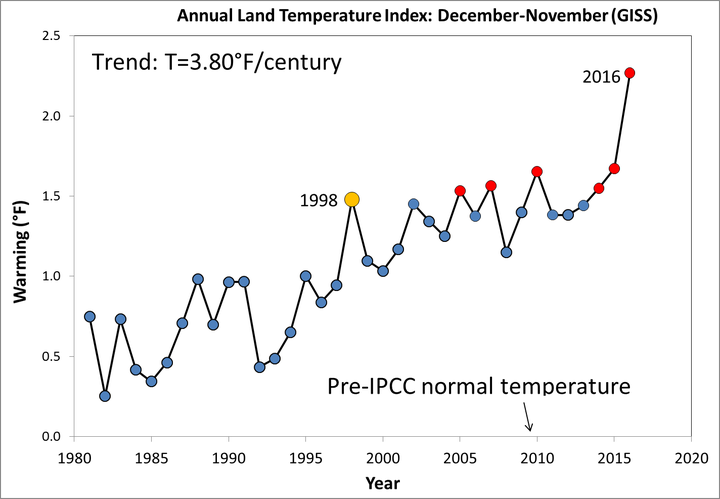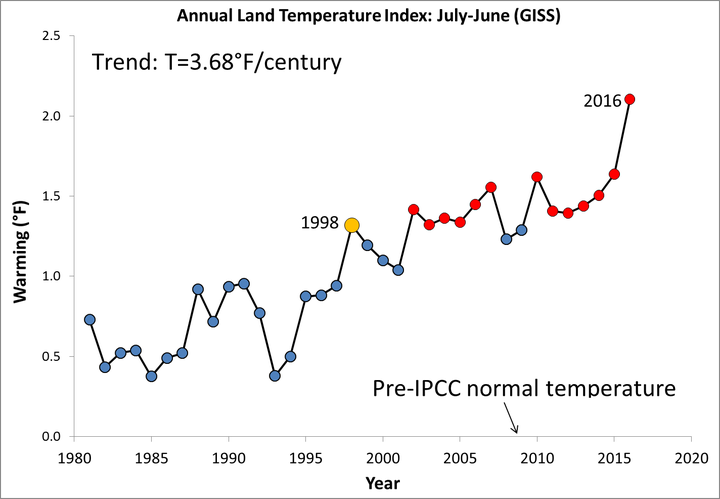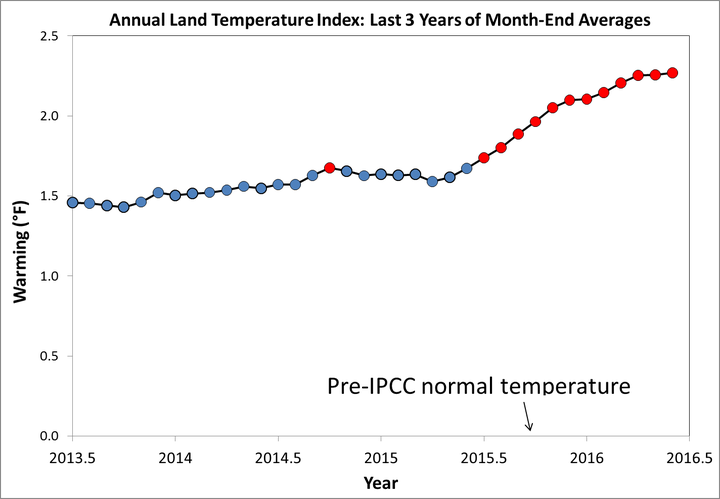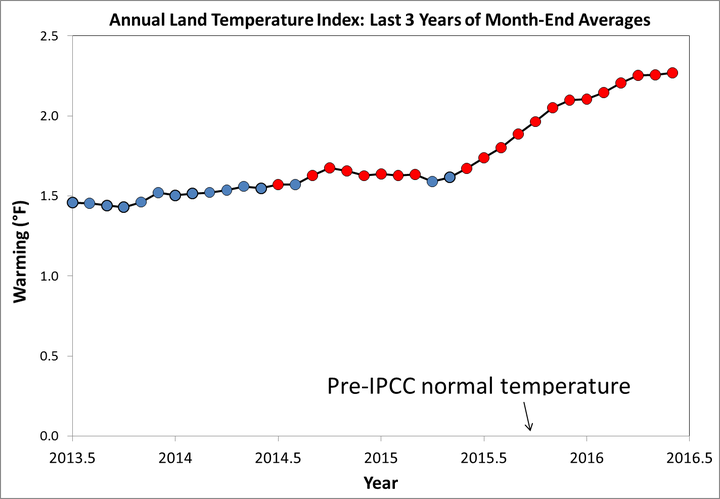In mid-January, an annual ritual takes place in the climate science and media world. Four independent government organizations that keep global temperature records—NOAA, NASA Goddard Institute for Space Studies (GISS), the UK Met Office, and the Japanese Meteorological Agency (JMA)—are all expected to make their much-anticipated findings available this week.
Every year, journalists ask if a new global temperature record has been set, and scientists scramble to explain the statistics and their analysis of the data. In some years, one data set will show a new record while another does not. That’s because global temperature is really an index that is calculated differently by different agencies with different data sets. Think of the various stock indexes. The Dow Jones Industrial Average does not move in perfect lockstep with the S&P 500 or the NASDAQ, because it is calculated differently and uses different data. But when there is major long-term bull or bear market, they all tend to move together.
The current long-term bull market (if you are buying global warming shares) will continue, There is no doubt that all the surface temperature indexes will shatter the old 2015 record this week, which blew out the previous record set in 2014.
But this New Year’s tradition is a distraction because annual average surface temperatures can be calculated more than just once a year. Our use of the calendar year to define global temperature is arbitrary and contrived. It turns out that the above-named agencies publish monthly temperature anomalies, so anyone can use their data to determine whether or not a new record has been set. They could do it every month.
I pointed out the arbitrariness of defining the year as Jan. 1 through Dec. 31 in my 2015 essay “What Global Warming Hiatus? Year 5775 Was Hot” because that is not the only way to define an annual cycle. We have Jewish years, Chinese years, fiscal years, academic years, tax years, and any other annual cycle anybody wants to define. The only thing that ultimately governs global temperature is physics, but physics does not favor the Gregorian calendar year.
I ran a sensitivity test to determine whether or not the choice of dates that define the annual cycle can affect the rank of a year in terms of global temperature. As expected, it does. I used the NASA GISS land surface temperature (based on weather-station thermometers). People live on land, so this is the temperature that directly affects all of us. Because I live in the USA, where people use thermometers that display temperature in degrees Fahrenheit, that’s the unit I use. I chose the latest published data as of Jan. 15, so my most recent 2016 climate year is Dec. 1 through Nov. 30. It sets a new record by a huge margin, but it is only the sixth time a new record has been set (for this climate year) since the 1998, El Niño. In my figure, I show record-setting years in red, and highlight the 1998 El Niño year. Note to deniers: global warming did not stop in 1998 by any definition.

On the other hand, I can choose my 2016 climate year to end on June 30 (no less arbitrary than Dec. 31 or Nov. 30). This version of 2016 still destroys the previous record, but in this case it is the 13th time that the 1998 record has been met or exceeded. The reason is that the 1998 El Niño warming was most extreme during the 1998 calendar year, and the July-June climate year split it into two different climate years. That blunted its effect on either climate year’s temperature anomaly, whereas its full force went into the 1998 calendar year. That might seem like a way of “rigging” the rank order of years, and that’s my point. Since the definition of a year is arbitrary, any ranking is already rigged, but in an arbitrary way. And that’s why the January ritual is a useless distraction and waste of energy, time, and newspaper ink.

What can we do to make announcements of new temperature data more useful? First, we should focus on trends rather than records and ranks. The trend is robust to arbitrary decisions about how to define the climate year. In my analysis, the 35-year trend ending in 2016 for a July-June climate year is 2.68 ℉ per century. The trend of a Dec-Nov climate year is 2.80 ℉ per century. Second, if we must have a ritual, it should be monthly. We can calculate 12 climate years for every calendar year, so we can recalculate and announce the trends every month.
It might be tempting every month to announce whether a new annual record has been set or not, but even that is ambiguous. Shall we claim a new annual record only for common climate year definitions (as we do now with calendar year), or should we avoid doing it when there was a greater anomaly for some previous 12-month period that did not span the same 12 months? I did it both ways for each of the last 36 possible monthly climate years. First, I only colored in red the years that set a new all-time 12-month record.

Second, I colored in red all the years for which a record was set above all previous climate years with the same definition.

It’s pretty clear that setting a new record depends on how you define it, and the definitions are arbitrary. On the other hand, the trends are robust, independent of arbitrary definitions, and quantitatively meaningful to any discussion of global warming. It’s too late for 2016, which is already all about records. But let’s plan to avoid the distraction and focus on trends from now on, ok?
